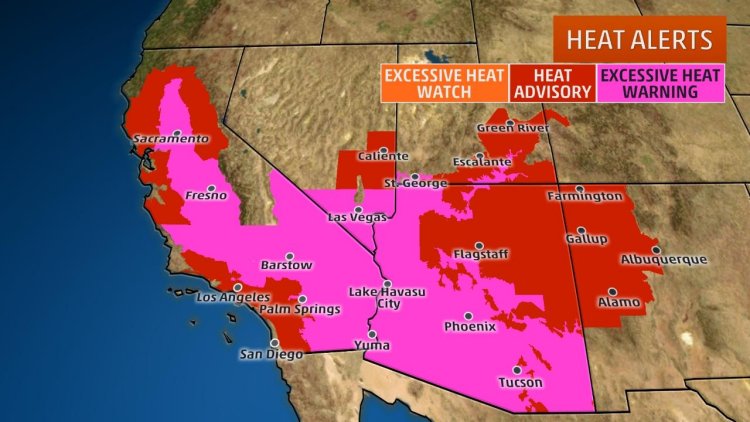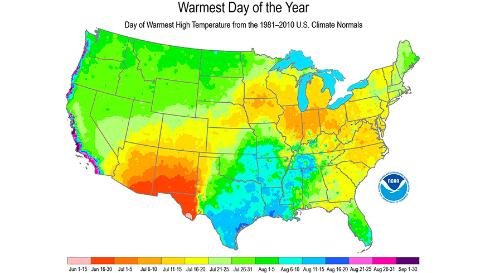
Dangerously hot temperatures are gripping the Southwest this week, potentially threatening the all-time record-high temperature in both Las Vegas and Phoenix.
A large dome of high pressure in the upper atmosphere has developed over the Southwest. Beneath the dome, sinking air is causing temperatures to soar well over 110 degrees in many areas.
This is a classic pre-monsoon heat event for the Southwest region. Some of the highest temperatures of the year can be recorded before the onset of the summer monsoon. Humidity levels are low, so the sun's energy can be used to heat the air rather than being absorbed by water vapor or used for evaporation.
Various heat alerts have been issued by the National Weather Service across Arizona, western New Mexico, southern Utah, southern Nevada and portions of California.

Several daily record highs were set Monday, including Death Valley, California (125 degrees), Phoenix (118 degrees – tied), Tucson, Arizona (115 degrees), Palm Springs, California (119 degrees), Fresno, California (108 degrees) and Reno, Nevada (103 degrees).
The 115-degree high in Tucson, Arizona, on Monday was the third hottest temperature ever recorded in that city and only the sixth time it has been 115 degrees or hotter since the late 1800s.
Here's what can be expected from this excessive heat event.

The hot conditions this week will be particularly dangerous for vulnerable groups, such as the sick and the elderly. The NWS offered useful heat safety tips that can be incorporated into a daily routine when extreme heat sets in.
Also, remember that flights planes may be delayed or canceled in temperatures of 115 or more due to the lost of lift that planes need to fly.
The North American monsoon typically begins to take shape in the Southwest as we head through July. This seasonal shift in wind direction brings increased moisture, fueling more frequent showers and thunderstorms.
 As a result, parts of the region see their hottest readings, on average, from the latter half of June into early July when the air mass is still very dry. For example, average highs in Phoenix and Tucson reach a maximum of 107 and 102 degrees, respectively, during this time.
As a result, parts of the region see their hottest readings, on average, from the latter half of June into early July when the air mass is still very dry. For example, average highs in Phoenix and Tucson reach a maximum of 107 and 102 degrees, respectively, during this time.
The hottest temperatures on record in Phoenix (122 degrees, June 26, 1990) and Tucson (117 degrees, June 26, 1990) also occurred in early summer.
A number of daily record highs were set on Sunday, including Death Valley, California (124 degrees), Fresno, California (107 degrees), San Jose, California (103 degrees), and San Francisco (97 degrees – airport).